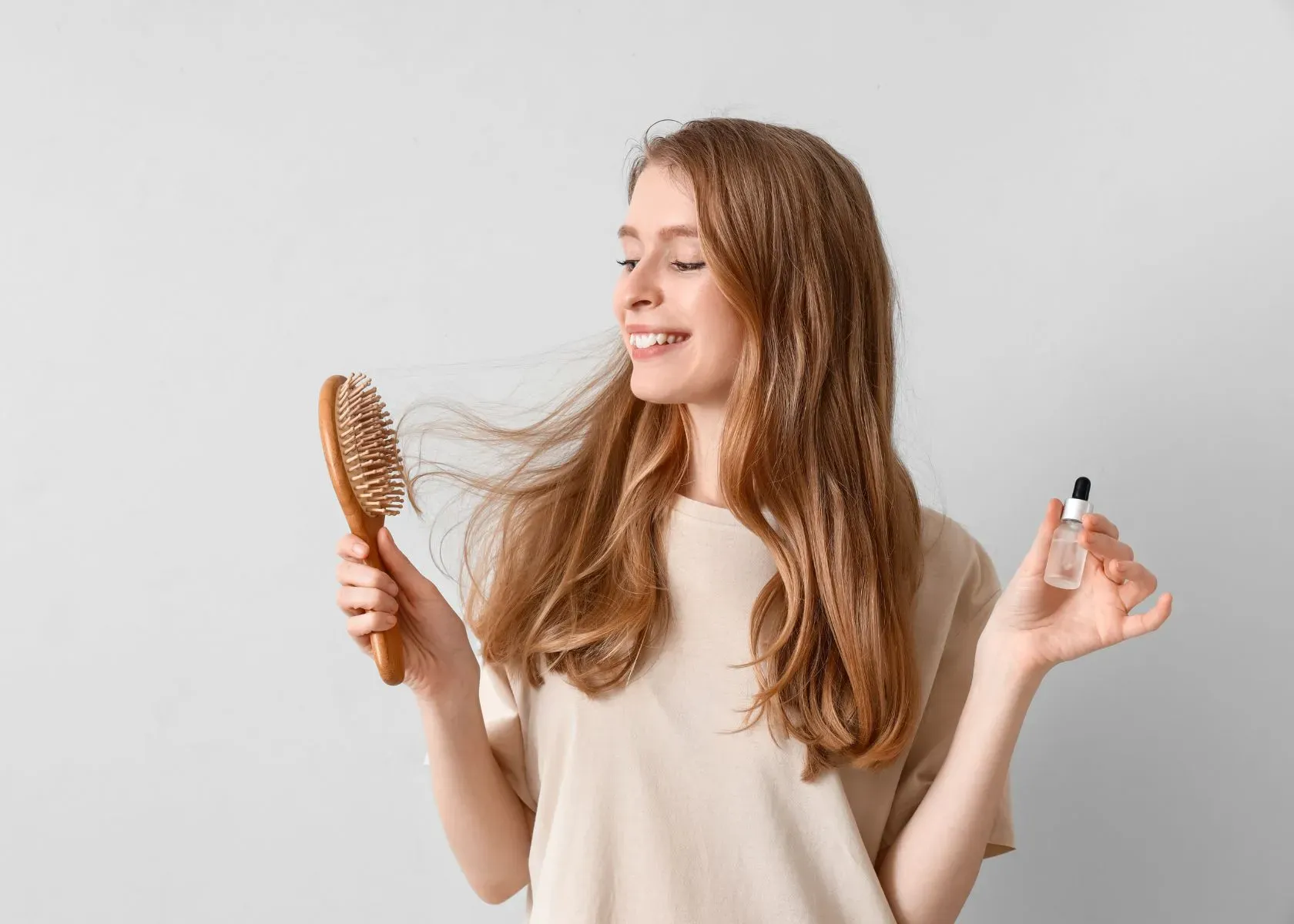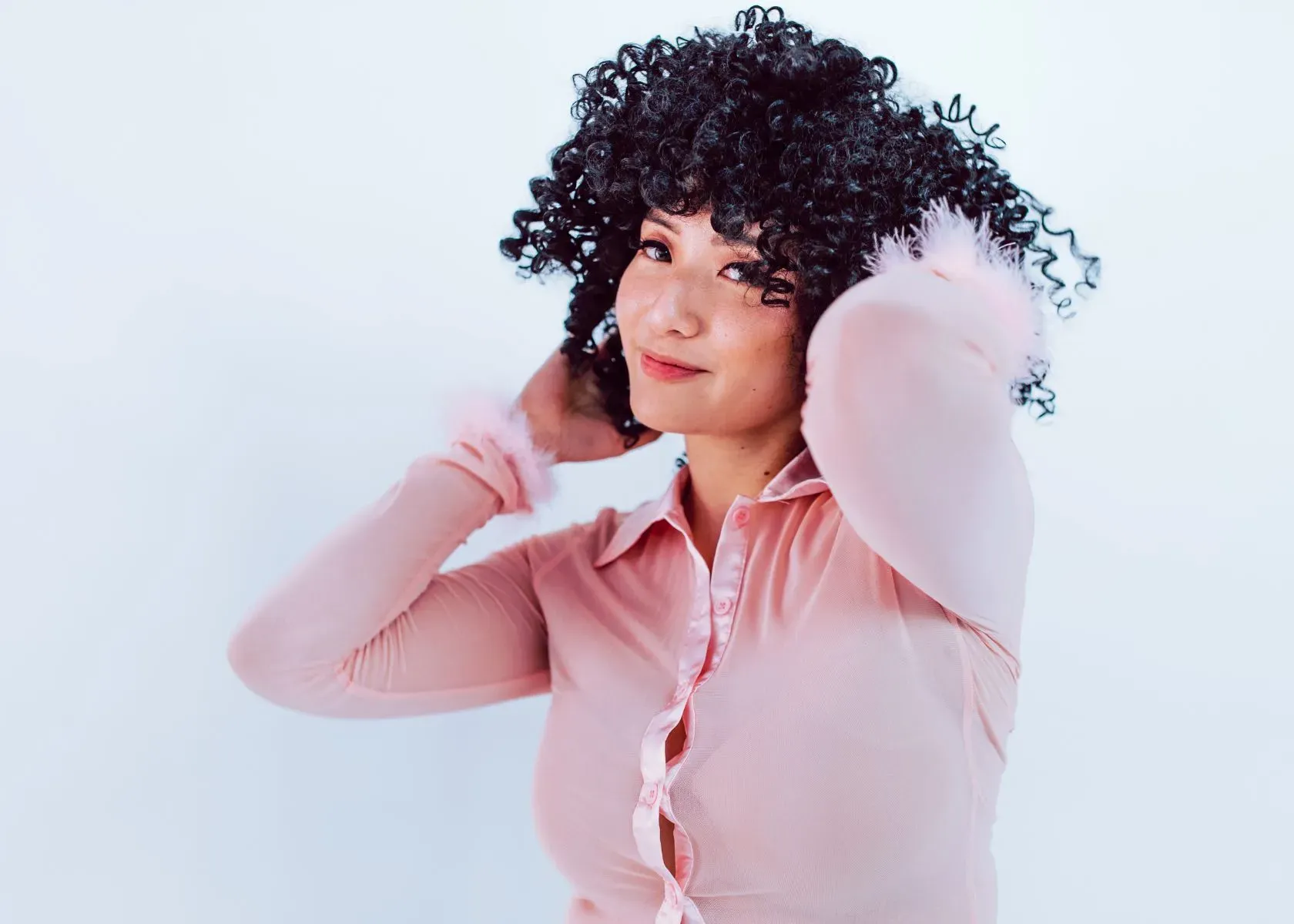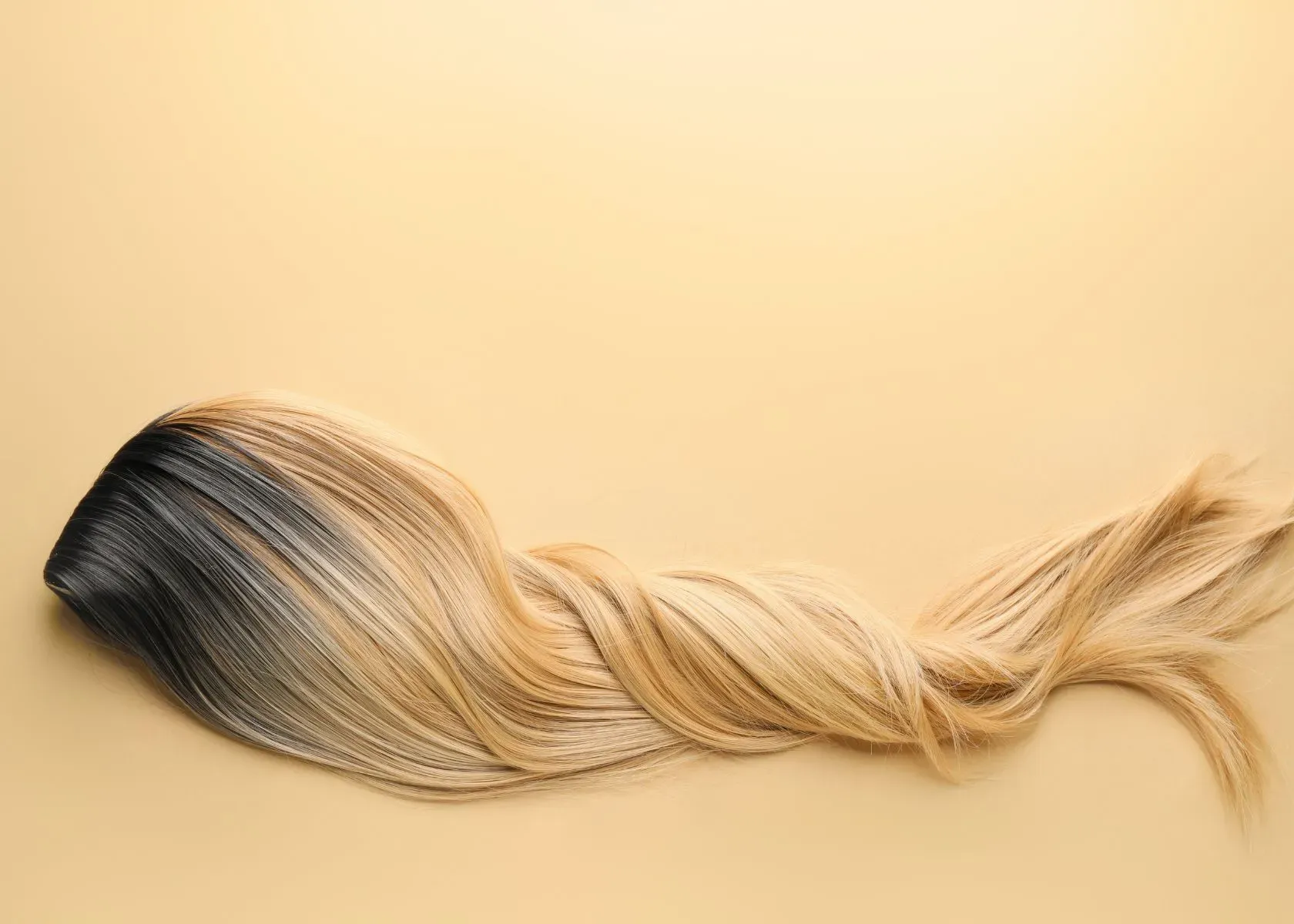Wearing a wig can be a game-changer, especially if you have long hair. You might worry about how to keep your flowing locks hidden under the wig without bumps or lumps. But don't sweat it; with the right approach, you can rock any wig style seamlessly.
One cool trick is braiding your thick hair close to your scalp before putting on your wig cap. This keeps everything flat and makes sure your wig fits snugly and looks natural.
In this blog, we have all the tips and tricks for prepping, securing, styling, and maintaining both your natural hair and the wig of your dreams. We'll show you easy ways to get that perfect look without hassle.
Get ready to turn heads with confidence!
- Braiding your very long hair before putting on a wig cap can create a flat surface, making the wig fit more naturally and preventing lumps or bumps.
- Detangle, wash, condition, and dry your natural hair properly to protect it from damage while wearing a wig.
- Choose the right size of the wig that fits comfortably on your head and secure it with bobby pins or clips for added stability.
- Take breaks between wearing short wigs to let your scalp breathe, and use nourishing products to keep both your natural hair and the wig hydrated.
- Experiment with different accessories like headbands or scarves to add style to your look. Use heat-friendly wigs if you want to style them with heated tools for various looks.
Prepping Your Natural Hair for Wearing a Wig

Before installing your wig hair, it's crucial to properly prep your natural hair. This includes washing and conditioning your hair, detangling it, and towel drying it thoroughly. Follow this regular hair care routine:
Wash and Condition Your Hair
Keep your natural hair in top shape before slipping on a wig by giving it a good cleanse. Use a gentle shampoo to wash away any dirt and oil buildup, which can cause your scalp to itch once the wig is on.
Follow up with a hydrating conditioner that will nourish and strengthen your strands, reducing the chances of breakage from friction under the wig cap.
After cleansing, apply a leave-in conditioner or natural oil to help detangle knots and provide extra moisture protection throughout the day. This step ensures your hair stays healthy and smooth while wearing your wig, preventing tangles that could lead to damage when you take off your headpiece at the end of the day.
Detangle Your Hair
After washing and conditioning your hair, the next step in prepping your natural hair for wearing a wig is to detangle it. Detangling helps ensure that your wig will sit smoothly over your natural hair without creating any lumps or bumps.
Use a wide-tooth comb or a detangling brush to gently work through any knots and tangles in your hair, starting from the ends and working your way up to the roots. This will help prevent breakage and minimize damage to your locks when you put on and take off your wig.
Once you have thoroughly detangled your hair, you can proceed with towel-drying it before securely installing the wig or hair extensions.
Towel Dry Your Hair
After detangling your hair, the next step is to towel dry it thoroughly. Gently patting your hair with a soft towel can help remove excess water and prevent damage to the strands. It's important to avoid rubbing vigorously, as this can lead to tangling and breakage.
Using a microfiber towel or an old t-shirt can also reduce friction on your hair, keeping it smooth and minimizing frizz. Additionally, gently squeezing the towel against your hair can help absorb moisture without causing unnecessary stress on the strands.
Once you've finished towel drying your hair, it's important to proceed with caution when working with long locks. Remember not to wrap the towel too tightly around your head; this can create tension and potentially cause damage to both your natural hair and any braids that might be present underneath.
Securely Installing the Wig

Finding the right fit for your wig is crucial to ensure secure and comfortable wear. Once you've found the perfect fit, securely attach the wig to your head and adjust it as needed for a seamless look.
Finding the Right Fit for Your Wig
To find the right fit for your wig, measure your head circumference and choose a wig size closest to your measurements. Ensure that the wig cap fits securely without being too tight or loose.
Opt for adjustable straps or combs inside the cap for a customizable fit. This will prevent any discomfort and ensure that the wig stays in place throughout wear.
Select a wig style that complements the shape of your face and aligns with your natural hairline. Adjust the position of the wig to sit just above your eyebrows, creating a seamless look with your natural hair.
Securing the Wig onto Your Head
After finding the right fit for your wig, securing it onto your head is crucial to ensure a natural and comfortable look. Here are some key tips for securing the wig effectively:
- Tuck all of your natural long or short hair underneath the wig cap before placing the wig on top to create a smooth base.
- Use hair pins or wig clips around the perimeter of the wig to securely attach it to your hair or wig cap.
- Adjust the straps inside the wig to customize the fit and ensure that it stays in place throughout the day.
- Gently tug on the edges of the wig to make sure it is properly positioned and secure without feeling too tight.
- Consider using a breathable mesh wig liner to provide extra security and prevent slippage, especially if you have longer hair.
Properly Adjusting the Wig
After securely installing the short wig, it's essential to properly adjust it for a comfortable and natural look. Gently shift the wig until it sits securely on your head, making sure the front is aligned with your natural hairline.
Adjust any straps or clips inside the cap to ensure a snug fit without being too tight. Use a brush or comb designed specifically for wigs to carefully style and blend the wig with your own hair, creating a seamless and polished appearance.
Ensure that there are no bulges or bumps, especially at the crown of your head. Smooth down any stray hairs and use styling products sparingly to maintain a natural look without weighing down the wig.
Tips for Wearing a Wig with Long Hair

Wrapping braids around your head can help create a flatter surface for the wig to sit on, preventing any lumps or bumps. Making cornrows is another effective method for securing long hair under a wig without compromising comfort.
Using the braid method with your natural fine hair can also provide added security and ensure that your wig stays in place throughout the day. If you have twists or a low bun, there are specific techniques you can use to wear a wig without causing damage or discomfort to your natural hair.
Wrapping Braids Around Your Head
To wear a wig comfortably with long hair, consider wrapping braids around your head. This method involves creating multiple braids and then wrapping them close to your scalp. By doing so, you create a flatter surface for the wig to sit on, minimizing any bulges or unevenness caused by your natural hair.
Additionally, this technique helps secure the braided hair under a wig cap, providing a smooth base for the wig and reducing the chances of slippage.
Furthermore, when wrapping braids around your head before wearing a wig, using smaller individual braids can distribute the bulk of your natural hair more evenly. This can result in a more comfortable fit and prevent any lumps or bumps from showing through the wig. It will also keep your hair healthy
Making Cornrows
To make cornrows, start by parting your hair into sections. Then, begin braiding each section of hair close to the scalp, incorporating small strands as you braid along. This will create neat and tight rows that lay flat against the head, providing a smooth surface for the wig to be placed on top.
Cornrows can help keep long hair secured and prevent any bulges or bumps from forming underneath the wig.
After creating the cornrows, tuck them under a wig cap for added security and a sleek base for your wig. Cornrows are a great option when wearing a wig with long hair, as they keep your natural locks neatly tucked away while also allowing you to change up your hairstyle with ease.
Using the Braid Method
Braiding your long hair before putting on a wig is an effective way to keep your natural locks in place. Dividing the hair into two or more sections and creating tight braids helps contain the length and thickness of the hair underneath the wig, preventing it from getting tangled or causing discomfort.
Tucking these braids under a snugly fitting wig cap provides a smooth base for securing the wig, ensuring a comfortable fit and reducing any potential slippage during wear. Additionally, wrapping the braids around your head creates a flatter surface for the wig to sit on while providing extra security.
Using basic braids as part of wearing a wig with long hair not only maintains your natural locks but also contributes to a seamless appearance when donning various styles of wigs. French braids can be utilized if you prefer more intricate styling options and need additional hold to secure long hair under the wig.
How to Wear a Wig with Long Hair - FAQs
Wearing wigs with long hair can seem complicated at first. You may wonder how to keep your natural hair tucked away neatly or how to blend the wig with your bio hair seamlessly. In this FAQ section, we will address some common questions and provide tips to help you style your wig like a pro.
How do you prepare long hair before putting on a wig?
To prep long hair for a wig, tie your hair into braids or flatten it against your head, covering it with a wig cap to create a smooth surface.
What are some tips for wearing wigs with natural long hair?
For wearing wig caps with natural long hair, secure your own hair flat beneath the wig cap and choose a wig that can accommodate the extra volume without slippage.
Can you style wigs if you have long hair underneath?
Yes! You can style wigs over your long natural hair using various styling options like tucking in braids or ponytails as well as using additional accessories.
How should I care for my own long hair while regularly wearing wigs?
Maintain healthy, styled under-wig locks by embracing proper scalp care routines and gentle daily maintenance that prevents damage from the friction of constant wig wear.
Are there any risks to my natural long when I wear wigs frequently?
Wearing a wig doesn't have to harm your lock; it's essential though, to avoid tight styles that pull at roots and use proper application techniques to protect your strands.
What’s the best way to ensure my natural hairstyle stays intact when I remove the wig?
When removing a supportive structure such as extensions after wearing them contactlessly ensures easy unboxing without pulling so much even post-workout.
Conclusion
Proper hair preparation and wig installation are essential for successfully wearing a wig with long hair. By cleansing and braiding your natural locks, you can create a smooth foundation for the wig to rest on, reducing friction and damage.
These practical techniques not only protect your natural hair but also ensure the seamless integration of the wig. Emphasizing these strategies can significantly enhance your overall experience and confidence when wearing a wig with long hair.
For further guidance or styling tips, explore additional resources catered to long-hair wig care, unlocking endless possibilities for styling and maintaining wigs with long hair. In the comments section below, let us know what is your easiest method for wearing wigs with long hair.
Read More About Hair Wigs and Extensions






